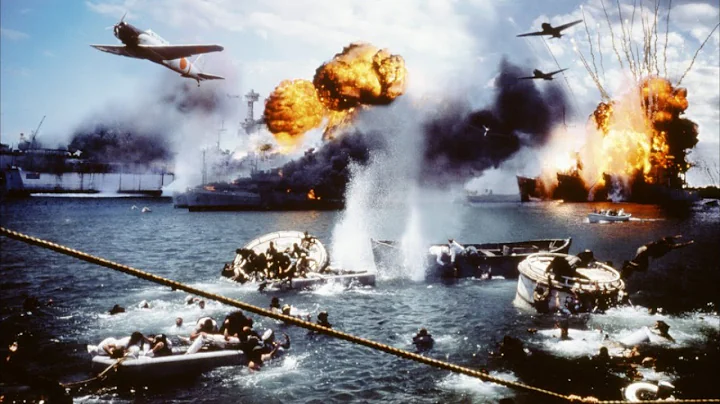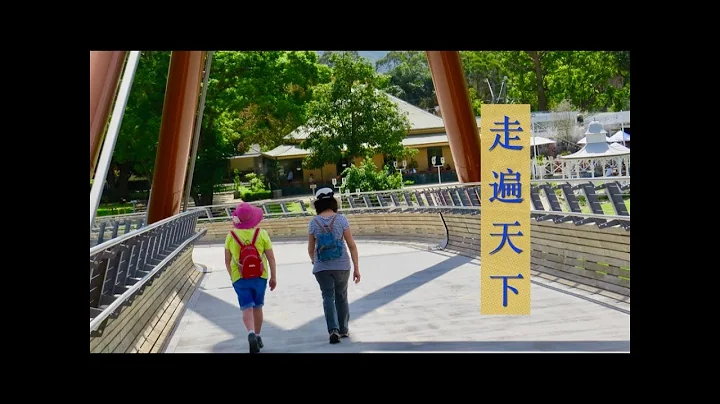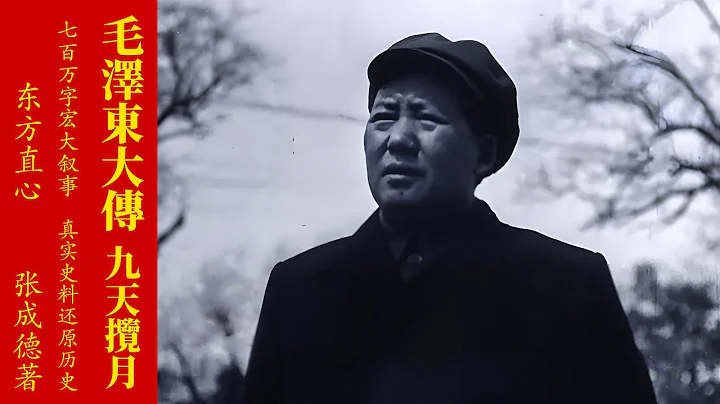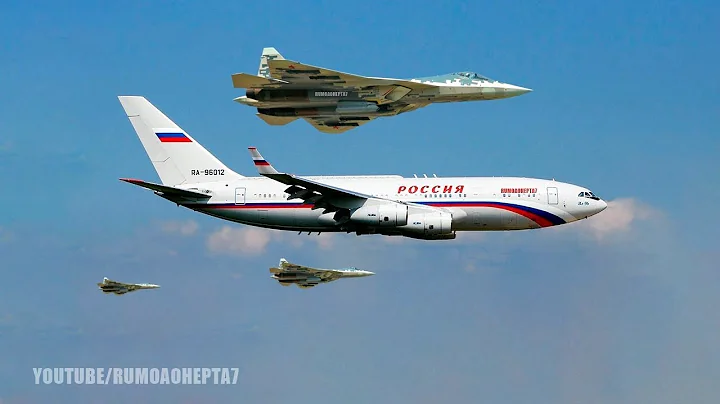On the day when
the Japanese attacked Pearl Harbor, they also sent their troops southward. They invaded the Philippines in multiple directions and madly attacked Malaysia, Singapore, and Indonesia, which was still a Dutch colony at the time. Next, they continued to march into New Guinea and neighboring islands. By the end of February 1942, the Japanese army had arrived at the gate of Australia.

At this time, Japan faced the next strategic choice: one was the maritime fleet composed of the United Kingdom, Australia, the United States, the Netherlands, and other countries. Although it retreated all the way west to the Indian Ocean and temporarily entered Sri Lanka for replenishment, it was very difficult. There may be a comeback. Therefore, it became the Japanese army's first option to further pursue and annihilate this fleet in the Indian Ocean to protect Japan's newly occupied Indonesia, Malaysia and other places, and to prevent the Allied forces from launching counterattacks in the Indian Ocean.
However, Australia, which is only separated from Indonesia by a water, receives full support from the United States and is likely to become a base for the US military's counterattack, so the threat is also great. New Guinea, located in the north of Australia, was an important gateway for attacking Australia. At that time, New Guinea was divided into Dutch New Guinea in the west and Australian New Guinea in the east.

The Japanese army had already occupied western New Guinea, which belonged to Dutch Indonesia, so they planned to continue to advance eastward on the island, occupying the most important Port Moresby in the southeast of Australian New Guinea, and also occupy northeastern Australia at sea. Fiji , Samoa and other islands, cutting off the United States' support for Australia. This will remove the threat from Australia and even further occupy part of Australia. This is the second option of the Japanese army.
As for the third option, the commander of the Japanese Navy Combined Fleet at the time Isoroku Yamamoto always believed that to capture the thief, you must first capture the king. The key to Australia's threat lies in the military support of the United States. In the Indian Ocean, the British Navy The fleet headed by it can still continue to fight because of the logistical support of the United States, so the United States is the key to the problem.

And Yamamoto Isoroku has always regretted that he failed to destroy the U.S. Navy's aircraft carrier in one fell swoop during the attack on Pearl Harbor. Therefore, the battle plan he drew up was to directly attack Hawaii, which would not only eliminate the U.S. Navy's presence in the Pacific in one fell swoop. The most important base, annihilating the United States' Pacific Fleet , can also immediately threaten the west coast of the United States. If Australia's threat is not resolved without a fight, the United States will be unable to continue to support the Allied fleet in the Indian Ocean.
Yamamoto Isoroku's theory is not completely unreasonable, but it was severely opposed by the Japanese Navy Ministry. The reason is that the Japanese army expanded rapidly in a short period of time, occupying most of the entire Southeast Asia, and its military strength is tight. It is really too weak to cross half of the Pacific to attack Hawaii. Moreover, even if it successfully captures Hawaii, the US military will definitely counterattack with all its strength to relieve the enemy. Danger on the native west coast.

It was very difficult for the Japanese army to hold Hawaii so far away from Japan. At the same time, it was not very certain whether the U.S. Navy and its aircraft carriers could be annihilated in one fell swoop, so the plan was considered too risky and was shelved. In particular, the Army is extremely opposed to Yamamoto Isoroku's plan. Instead, it supports removing threats from Australia and the Indian Ocean first to ensure that the Army's combat forces in Southeast Asia have access to safe maritime supply routes.
The compromise operational plan finally decided by Japan at that time was to first attack the Allied fleet in the Indian Ocean, and at the same time prepare to attack Fiji and Samoa. After successfully weakening the possible threats from the Indian Ocean, it would then attack Australian New Guinea, Fiji and Samoa with all its strength. Samoa, in this way, it can cut off US military assistance, besiege Australia, remove the threat, and even send troops to occupy part of Australia.

Therefore, at the end of March, the Japanese aircraft carrier fleet entered the Indian Ocean first and launched a massive air attack on the Allied fleet in Bay of Bengal and Sri Lanka. Until April 10, it achieved extremely fruitful results. The Japanese aircraft carrier exerted its air superiority, leaving the British army unable to fight back. The Japanese army sank dozens of ships, including an aircraft carrier and two cruisers . This also caused the British to misjudge the Japanese army's next move. The first step is probably to occupy Sri Lanka, abandon the counterattack plan, and go all out to strengthen Sri Lanka's defense.
But what the Japanese army never expected was that the attack fleet led by Doolittle was also moving in the direction of Japan at this time. The US military planned to use the Army's B-25 bomber to take off from the aircraft carrier and use The B-25 had the advantage of a longer range and launched air strikes on Tokyo from the sea. It is obvious that the symbolic significance of this air strike is far greater than its substantive significance. The most important thing is to show the United States' will to fight back. However, neither the U.S. military nor Doolittle expected that this air raid would change the strategic direction of the Japanese army.

Because of the air raid on April 18, U.S. bombers dropped bombs near the Imperial Palace of Japan, which greatly shocked the senior Japanese military. They believed that there was no way to protect the Imperial Palace , which was a great shame for the military. Therefore, how to prevent the U.S. military from continuing to launch similar attacks? It has become the first priority of Japanese Navy .
The Japanese must defend their homeland and try to deal with the U.S. Pacific Fleet as soon as possible. The Japanese aircraft carrier fleet in the Indian Ocean was quickly recalled to prepare for the decisive battle at Midway.
Yamamoto Isoroku's plan was resurrected due to this failure, but the attack on Hawaii was still considered too risky, so the attack on Midway Island was changed to obtain a forward operating base for the Japanese army to prevent sneak attacks by the US military; Secondly, it planned to induce the US aircraft carrier fleet to join the war and annihilate the US aviation force in the Pacific in one fell swoop.

However, the Japanese Navy is still unwilling to completely give up the original plan. The result of the compromise is that some aircraft carriers will go south to support the offensive to attack Port Mobis and besiege Australia before launching the Midway Operation. At the same time, they will also launch the Midway Operation. And attack the Ilyushin Islands further north as a diversionary to pretend to attack . This revised battle plan was quickly approved.
But what the Japanese army did not expect was that the two aircraft carriers Shokaku and Zuikaku that went south to support the attack on Mobis Port were severely damaged in the Coral Sea battle and the other lost most of it. Both the carrier-based aircraft were unable to participate in the subsequent Battle of Midway, which reduced the number of aircraft carriers available to the Japanese Navy by one-third.

In the Battle of the Coral Sea, the outpost of the Battle of Midway, although the U.S. military was at a disadvantage in terms of results, one aircraft carrier Lexington was sunk, and another aircraft carrier USS Yorktown was severely damaged, but not only the first It prevented the Japanese army from obtaining Port Moresby, an important springboard for attacking Australia, and paved the way for victory in the subsequent Battle of Midway. It was a typical battle that failed tactically but was strategically successful.
To make matters worse, the Japanese army's code had already been cracked by the US military. Before the war started, the US had determined that the Japanese army would attack Midway Island, so it laid a trap first. Even the USS Yorktown, which was severely damaged in the Battle of Coral Island, also After a few days of emergency docking for repairs, it was immediately re-entered the battlefield.
If you look at the Battle of the Coral Sea simply, it was a small victory for the Japanese army, but if you look at the Battle of the Coral Sea and the Battle of Midway together, the US military won a big victory.

It was a serious strategic mistake for the Japanese army to invest in the Battle of Coral Sea. Japan was already preparing for a decisive battle with the US military at Midway Island. It should not have dispersed its aircraft carrier fleet and participated in the Battle of the Coral Sea. As a result, it was defeated by the US military one by one. However, the Japanese army did not attach much importance to the Battle of Coral Sea, so they failed to send a superior fleet to ensure victory. The Japanese army's division of forces was actually a failure.
The Japanese army at that time did not think so. They were dazzled by the short-term victory or advantage and did not realize such mistakes at all.
Therefore, the Battle of the Coral Sea is regarded as a typical "tactical failure, but strategic victory" battle.The U.S. military suffered higher losses than the Japanese in this battle, but it gained the most important strategic opportunity and reversed the entire Pacific War.





















